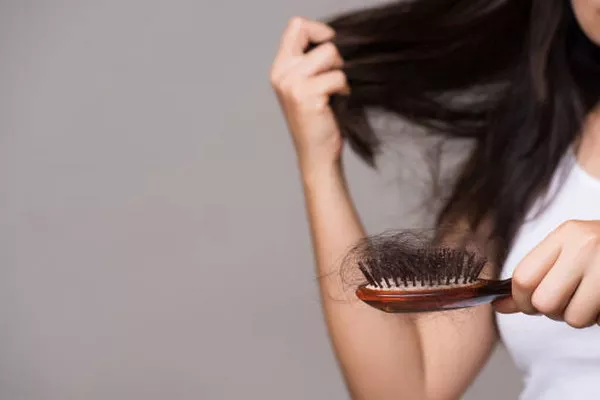Hair loss is a common concern for both men and women, often causing distress and impacting self-confidence. While multiple factors contribute to this condition, hormones play a crucial role. Among the various hormones involved, one stands out as a key culprit: Dihydrotestosterone (DHT). In this article, we will explore the role of DHT in hair loss, understand how it affects hair follicles, and delve into potential treatment options to combat its detrimental effects.
I. Understanding DHT and Its Formation
DHT: The Hair Loss Villain
Dihydrotestosterone, a hormone derived from testosterone, plays a significant role in the development of male characteristics during puberty. However, excessive levels of DHT can wreak havoc on hair follicles, leading to the miniaturization and eventual loss of hair.
The Conversion Process
Testosterone, a hormone produced primarily in the testes (and in smaller quantities in women’s ovaries and adrenal glands), is converted into DHT through the action of the enzyme 5-alpha-reductase. This conversion primarily occurs in the hair follicles and other tissues, such as the prostate gland.
II. The Impact of DHT on Hair Follicles
DHT and Hair Follicles: A Complex Relationship
When DHT levels are elevated, it binds to specific receptors in the hair follicles. This interaction disrupts the natural hair growth cycle, leading to progressively shorter, thinner, and less pigmented hair strands. Over time, the affected hair follicles become dormant and eventually cease to produce new hair, resulting in hair loss.
Miniaturization: A Visible Sign
Miniaturization is a key characteristic of DHT-induced hair loss. The hair follicles gradually shrink in size due to the effects of DHT, resulting in shorter and finer hairs. As the miniaturization process continues, these hairs become too weak to emerge from the scalp, leading to a visible thinning of the hairline and crown.
III. Genetic Predisposition and DHT Sensitivity
The Role of Genetics
While elevated DHT levels contribute to hair loss, the extent to which individuals are affected is largely determined by their genetic predisposition. Genetic factors can influence the sensitivity of hair follicles to DHT, with some individuals being more prone to hair loss due to their inherited traits.
Androgen Receptor Gene: A Key Player
The androgen receptor gene (AR gene) plays a crucial role in determining an individual’s sensitivity to DHT. Variations in this gene can impact the receptor’s affinity for DHT, potentially increasing the risk of hair loss. Further research is being conducted to gain deeper insights into the interplay between genetic factors and DHT sensitivity.
IV. Treatment Options for DHT-Induced Hair Loss
Understanding and Addressing DHT: The Key to Effective Treatment
Given the pivotal role of DHT in hair loss, several treatment options aim to address its effects. These include:
Medications: Finasteride and Dutasteride
Finasteride and Dutasteride are medications that inhibit 5-alpha-reductase, the enzyme responsible for converting testosterone into DHT. By reducing DHT levels, these drugs can slow down or even halt hair loss progression. However, they may have potential side effects and require a prescription.
Topical Solutions: Minoxidil
Minoxidil is a topical solution that promotes hair growth by widening blood vessels and delivering essential nutrients to the hair follicles. While it doesn’t directly address DHT production, it can help revitalize miniaturized follicles and promote regrowth.
Hair Transplants and Restoration Techniques
Hair transplants and restoration techniques offer a more permanent solution for individuals dealing with DHT-induced hair loss. These procedures involve the extraction of hair follicles from areas of the scalp resistant to DHT and their transplantation into areas experiencing thinning or balding. Advanced techniques, such as Follicular Unit Extraction (FUE) and Follicular Unit Transplantation (FUT), have significantly improved the naturalness and success rates of these procedures.
Low-Level Laser Therapy (LLLT)
LLLT utilizes low-level laser devices to stimulate hair follicles and promote hair growth. It is believed to enhance blood flow to the scalp, increase cell metabolism, and prolong the anagen (growth) phase of the hair cycle. Although LLLT may not directly target DHT, it can be used in combination with other treatments to improve outcomes.
Diet and Lifestyle Modifications
While not directly targeting DHT, adopting a healthy lifestyle and making certain dietary modifications can support overall hair health. A balanced diet rich in essential nutrients, including vitamins (such as biotin and vitamin D), minerals (like zinc and iron), and proteins, can provide the necessary building blocks for strong and vibrant hair. Additionally, managing stress levels and avoiding excessive heat and chemical treatments can help maintain the integrity of hair follicles.
V. Conclusion: Taking Control of DHT-Induced Hair Loss
Hair loss caused by elevated DHT levels can be a distressing experience, impacting self-esteem and quality of life. However, understanding the role of DHT in hair follicle miniaturization allows individuals to take proactive measures to combat its effects. Whether through medication, topical solutions, hair transplants, or lifestyle changes, there are various options available to manage DHT-induced hair loss.
It is important to consult with a healthcare professional or a qualified hair specialist to determine the most suitable treatment approach based on individual circumstances. By addressing DHT and implementing appropriate measures, individuals can regain control over their hair health and restore their confidence, embracing a future with a fuller and healthier head of hair.
Remember, while DHT may be the hormone behind hair loss, modern advancements in treatment options offer hope and opportunities for hair restoration. With the right knowledge and proactive steps, one can strive towards a future where balding becomes a thing of the past.
Disclaimer: This article is for informational purposes only and should not be considered medical advice. It is always recommended to consult with a healthcare professional for personalized guidance and treatment options for hair loss.

